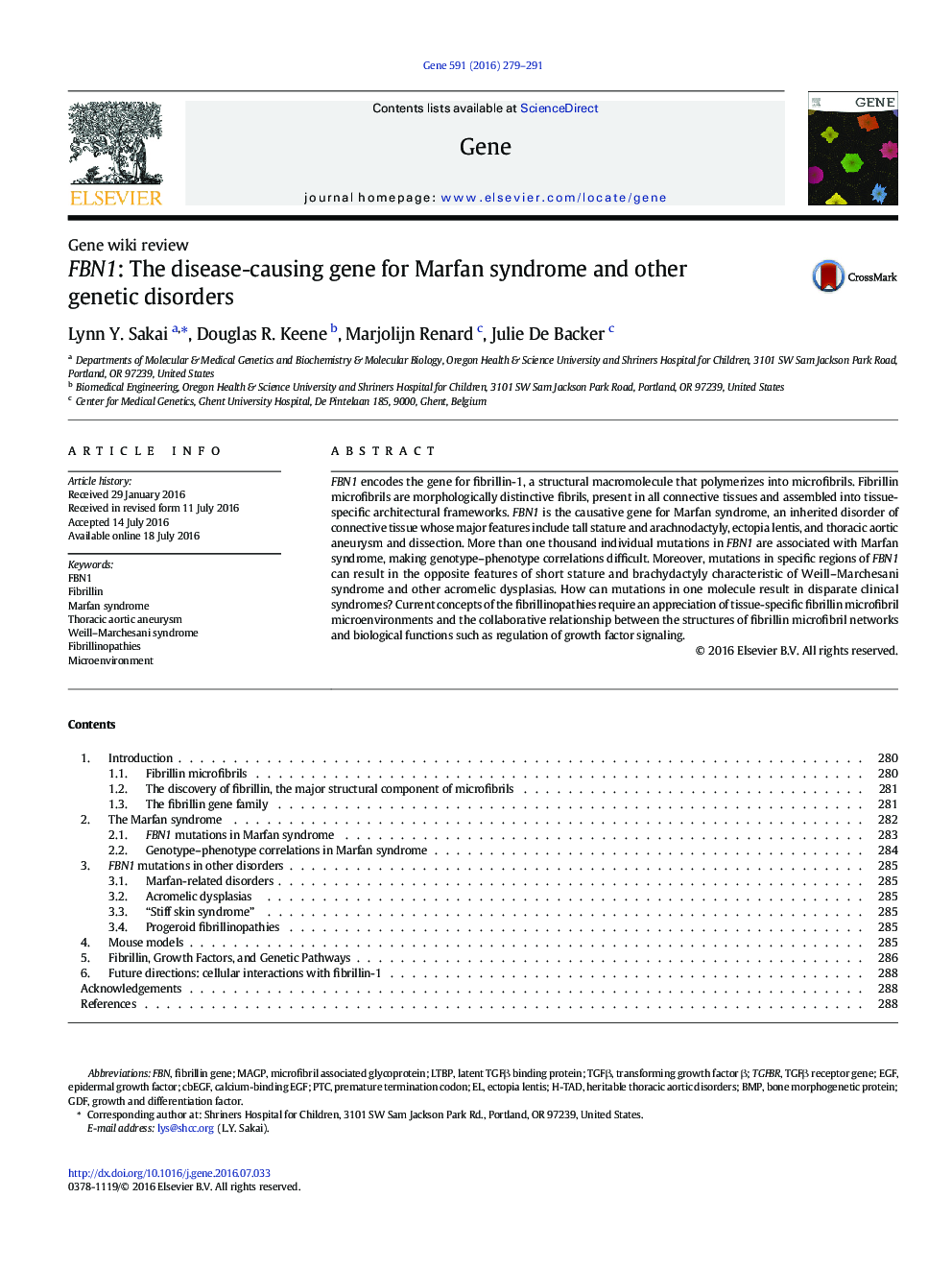| Article ID | Journal | Published Year | Pages | File Type |
|---|---|---|---|---|
| 2814805 | Gene | 2016 | 13 Pages |
•FBN1 encodes fibrillin-1, a structural macromolecule for extracellular microfibrils.•Mutations in FBN1 cause the Marfan syndrome and related disorders.•Mutations in FBN1 also cause acromelic dysplasias and stiff skin syndrome.•Abnormal growth factor signaling is implicated in these fibrillinopathies.
FBN1 encodes the gene for fibrillin-1, a structural macromolecule that polymerizes into microfibrils. Fibrillin microfibrils are morphologically distinctive fibrils, present in all connective tissues and assembled into tissue-specific architectural frameworks. FBN1 is the causative gene for Marfan syndrome, an inherited disorder of connective tissue whose major features include tall stature and arachnodactyly, ectopia lentis, and thoracic aortic aneurysm and dissection. More than one thousand individual mutations in FBN1 are associated with Marfan syndrome, making genotype–phenotype correlations difficult. Moreover, mutations in specific regions of FBN1 can result in the opposite features of short stature and brachydactyly characteristic of Weill–Marchesani syndrome and other acromelic dysplasias. How can mutations in one molecule result in disparate clinical syndromes? Current concepts of the fibrillinopathies require an appreciation of tissue-specific fibrillin microfibril microenvironments and the collaborative relationship between the structures of fibrillin microfibril networks and biological functions such as regulation of growth factor signaling.
